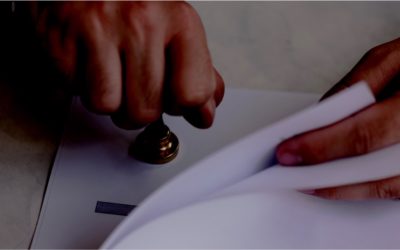In order to enjoy a tax relief specified in art. 18d of the Act of 15.02.1992 on Corporate Income Tax (hereinafter: “the CIT Act”), a taxpayer must perform activities that meet the conditions for recognizing them as research and development activities within the meaning of art. 4a points 26-28 of the CIT Act, i.e. as creative activities which involve scientific research or development works performed in a systematic manner for the purposes of increasing the body of knowledge and using the body of knowledge to create new applications.
In this regard the Head of the National Tax Information in an individual interpretation of 19.03.2020 (no. 0111-KDIB1-3.4010.21.2020.2.BM) expressed a view that:
for the purposes of research and development activities, to a minimal extent, it is sufficient to undertake creative activity on the enterprise scale, i.e. the entrepreneur on his own (as part of research and development works) develops new or improved products, processes, services, even if a similar solution has already been developed by another entity. Thus, the creativity of research and development activities may be manifested in the development of new concepts, tools, solutions not yet found in the taxpayer’s economic practice or innovative enough to be significantly different from solutions already being used by the taxpayer.
The above means that in order to enjoy the research and development relief the taxpayer does not have to own a research and development center or develop highly innovative technologies. The relief may be granted in the case of expenses incurred on e.g. activities improving organization of production, automation of production process or increasing its efficiency, reduction of material consumption of production.
In order to enjoy the research and development relief, the following conditions must be met jointly:
1) the taxpayer incurs costs for research and development activities as defined above,
2) the costs for research and development activities constitute for the taxpayer the tax deductible expenses within the meaning of the CIT Act,
3) the tax deductible expenses constitute eligible costs within the meaning of the CIT Act,
4) the costs incurred by the taxpayer have not been included in the calculation of income exempted from an income tax in connection with the activities in the special economic zone on the basis of a permit or in connection with the activities specified in the decision on support referred to in art. 17 sec. 1 point 34a of the CIT Act,
5) in the records referred to in art. 9 sec. 1b of the CIT Act the taxpayer indicates separately the costs of research and development activities,
6) the taxpayer shall show the eligible costs subject to the deduction in the tax return,
7) the amount of deducted eligible costs may not exceed the limits specified in the CIT Act,
8) the eligible costs may not be reimbursed to the taxpayer in any form.
Thus, as indicated by the tax authority in the abovementioned individual interpretation of 19.03.2020, in order to enjoy the research and development relief, an analysis should be carried out which shall focus on:
1) identifying the aspects of economic activity that may be considered as research and development activity (i.e. those activities of a taxpayer that meet the definitions indicated in art. 4a points 26-28 of the CIT Act);
2) determining the costs of research and development activities (by identifying the costs that meet the definition of “eligible costs” referred to in art. 18d of the CIT Act);
3) identifying documentation that justifies the right to enjoy the relief and fulfilling formal obligations (primarily in order to perform the obligation specified in art. 9 sec. 1b of the CIT Act).
MORE IN THIS CATEGORY
Postponement of the deadline for the implementation of the mandatory national e-invoice system
When will the new implementation date be known? On 19.01.2024 the Minister of Finance announced that the KSeF system will not be implemented in 2024. As the reasons for his decision, the Minister of Finance pointed to errors detected in the operation of KSeF. Let us...
The national e-invoice system will become mandatory from july 1, 2024
On August 4, 2023, the President signed the Act of June 16, 2023 amending the Act on Goods and Services Tax and certain other acts, which provides for the mandatory National e-Invoice System (hereinafter referred to as "KSeF").Now the act is just waiting for...
Withholding tax
According to article 26 section 1 of Polish act on corporate income tax, Polish entities making payments for: interest, copyright or related rights, rights to inventive designs, trademarks or ornamental designs, including from the sale of those rights, from...


